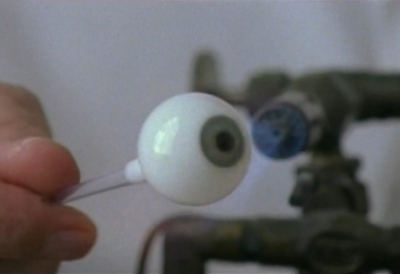 Haas in the middle stages of flameworking a glass eye.
Haas in the middle stages of flameworking a glass eye.
Originally from Germany, Haas relocated to the UK in 1968 to replace an ocularist who suddenly passed away. Since then, Haas has continued to craft glass eyes, often with their intended patients in the room. “Sometimes it helps for people to see you making the eye. It’s a matter of reassurance,” he told the The Times in a 2003 article.
British patients, some of whom go to Haas because of allergies to the acrylic used in more “modern” prosthetic eyes, have an option no longer available to their American counterparts, as not a single glass eye maker still works in the United States. According to ocularist David Gougelman, custom artificial eyemaking first came to the US in 1851 when his great-grandfather Peter Gougelmann opened an office in downtown Manhattan. The decline in glass eyes began in the late 1940s and, by the mid-1980s, ocularists ceased making them entirely. “As the [acrylic] eyes were perfected, they became the choice of the ocularists fabricating them and patients alike,” said Gougelman. Although he learned how to make a glass eye, he has never made one for a patient. [Nod to Gizmodo via Curiosity Counts]
To see how prosthetic eyes were one fabricated through flameworking, see the short film about Jost Haas by clicking on this link, or on the frame below:
http://vimeo.com/8320480
—Grace Duggan



